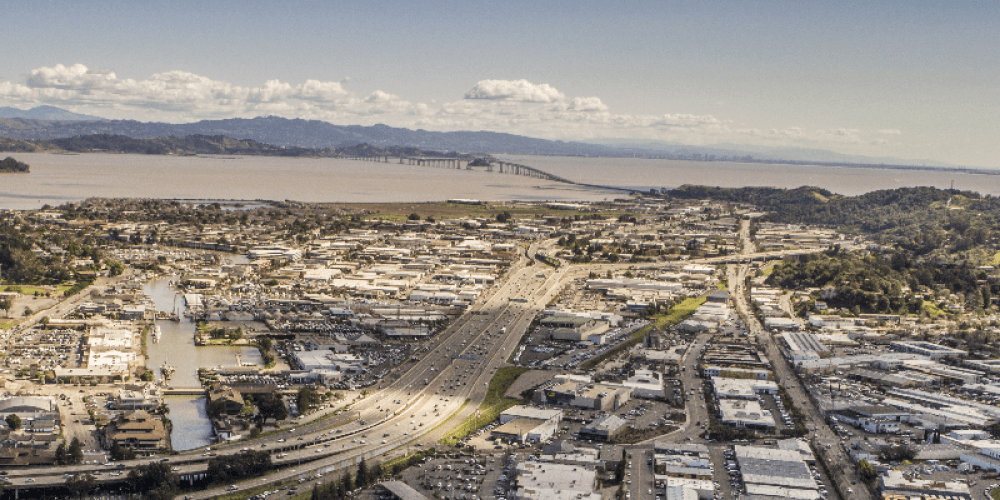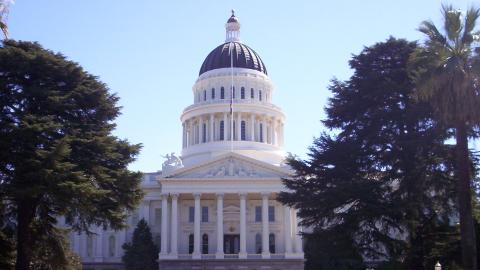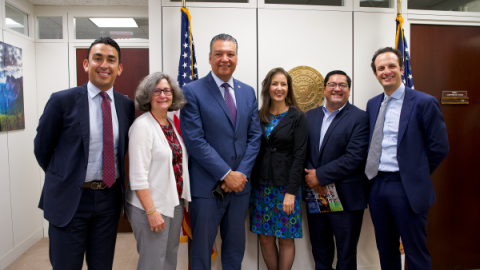
Last month Congress approved a $1.3 trillion appropriations bill to fund the government for Fiscal Year (FY) 2018. In a departure from previous years, the budget included major boosts in funding for both defense and non-defense discretionary programs and also significantly increased investment in federal housing and transportation programs.
In this post, we’ll provide summaries of major housing, transportation and other relevant provisions from the final FY 2018 spending bill, a chart comparing FY 2017 and FY 2018 funding levels, as well as an analysis of California and/or Bay Area impacts for select housing and transportation programs.
Housing
Federal support for housing grew under the bill, increasing funding for local governments to revitalize communities, provide rental assistance, support public housing and help the homeless, among other areas. As shown in the below table, the omnibus provided a $300 million, or 10 percent, increase in the Community Development Block Grant (CDBG) program; a $2.4 billion, or 8 percent, increase in Section 8 Tenant and Project-based Rental Assistance; and a $808 million, or 42 percent, increase in public housing capital. California and Bay Area jurisdictions, communities, families and individuals rely heavily on many of these programs, and the expanded financial support from the federal government is sure to be welcome.
The budget also expanded the Low Income Housing Tax Credit Program (LIHTC), the largest affordable housing financing tool in California, and increased the program’s flexibility. Though Bay Area impacts are still being analyzed, these provisions could help finance more affordable housing units in the Bay Area, especially if the statewide housing bond proposed for the November ballot passes. Unfortunately, however, this increase will not be sufficient to offset the estimated $500 million annual loss in LIHTC market value to California caused by the 2017 federal tax cut bill.
Transportation
On the transportation side, the bill provided the U.S. Department of Transportation with nearly $9 billion above FY 2017 funding levels, with major boosts for highways and transit, capital and competitive grant programs, and railway state of good repair and safety improvements, among other areas.
As shown in the below table, the final FY 2018 spending bill increased spending for federal highway and transit formula programs more than $3.3 billion above levels authorized in the current long-term transportation bill, the FAST Act. This will provide the Bay Area with a one-year increase of approximately $38 million in transit revenues to fund bus and rail state of good repair improvements and an estimated $16 million increase in flexible federal highway funds to supplement the One Bay Area Grant program.
The increase to the Capital Investment Grant (CIG) program should help ensure that the BART Silicon Valley Phase 1 and San Francisco Central Subway projects receive their final allotments of federal funds, and that $100 million goes to the Caltrain Modernization project. Importantly, the bill also provides renewed hope to SMART and other Bay Area transit operators with projects in the CIG pipeline that they may still yet receive federal funding guarantees.
Other
Finally, the bill retained level funding for the National Estuary Program, which will provide the San Francisco Estuary Partnership (SFEP) with $600,000 in base funding to support efforts to increase the health and sustainability of the San Francisco Estuary. The bill further provided an additional $1 million for competitive grants for projects within National Estuary Program areas – 28 estuaries across the country designated as estuaries of national significance.
The final FY 2018 spending bill also significantly increased Federal Emergency Management Agency funding for hazard mitigation, including $249 million for the Pre-Disaster Mitigation Program, an increase of $149 million from FY 2017 funding levels. This increase was consistent with MTC and ABAG’s request for increased federal support for upfront investments in resilient infrastructure and mitigation programs, which are increasing in importance as natural disasters increase in frequency and severity.



Submit your comment
In order to receive a reply to your comment, please provide an email address.